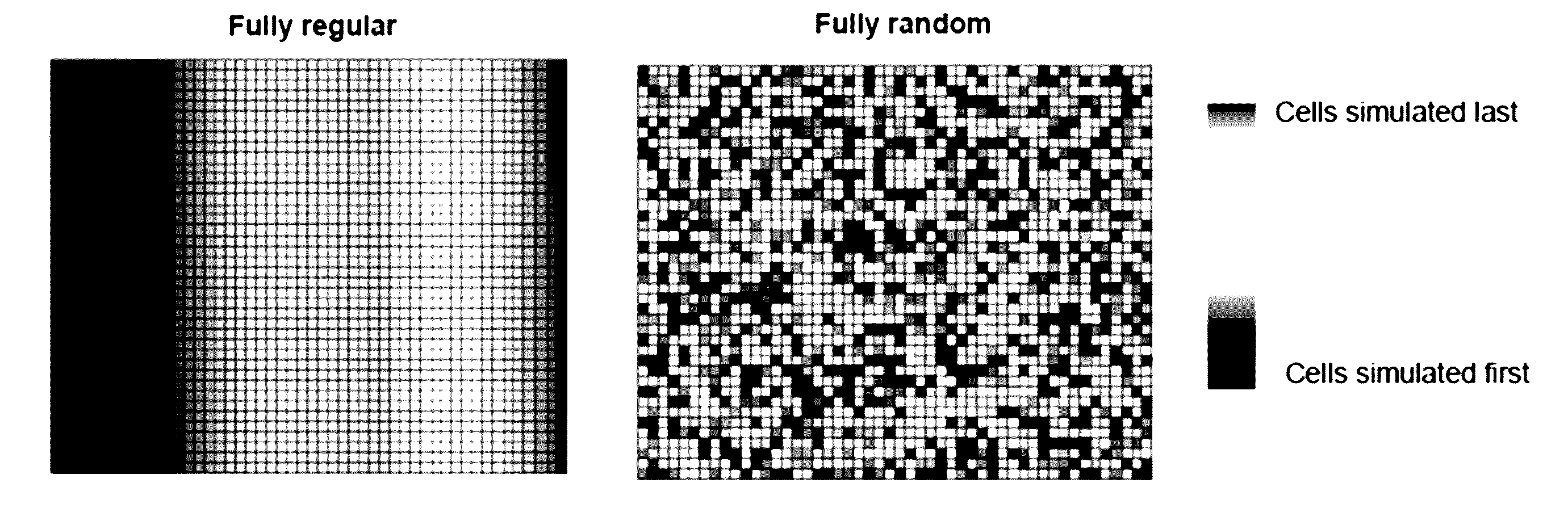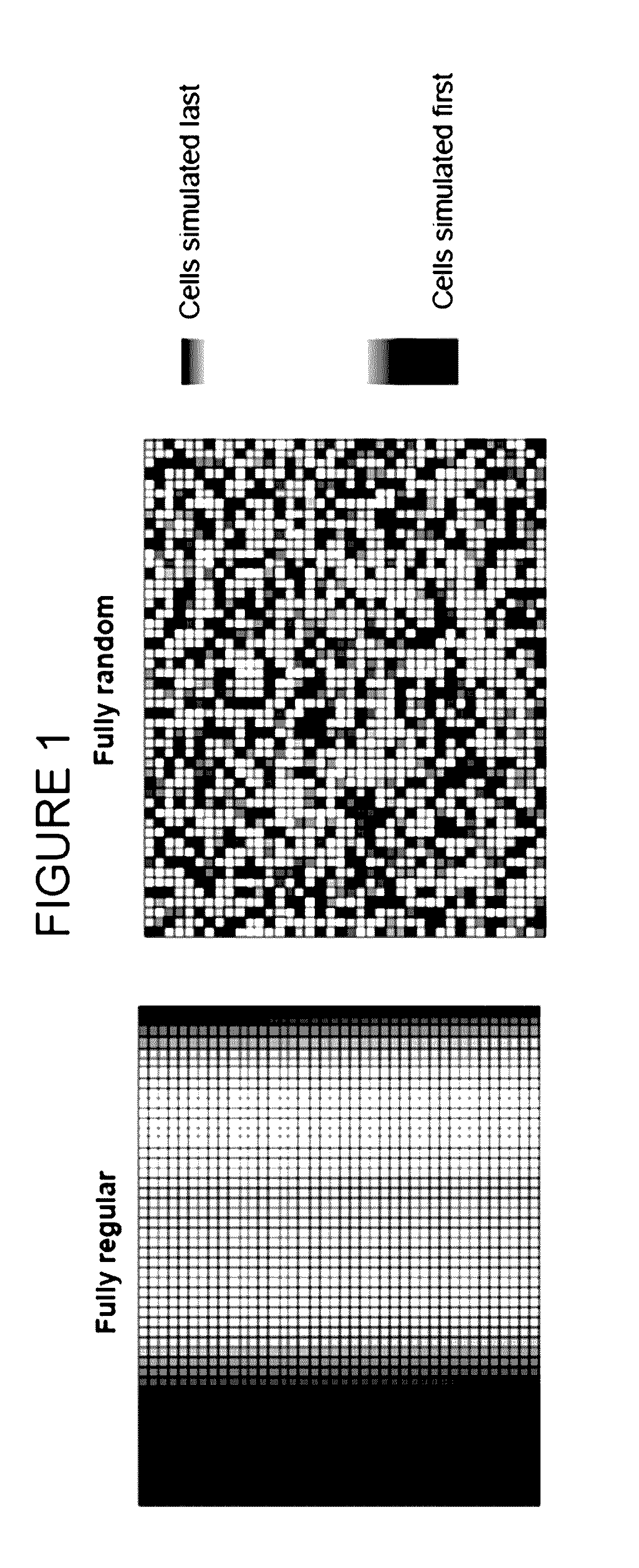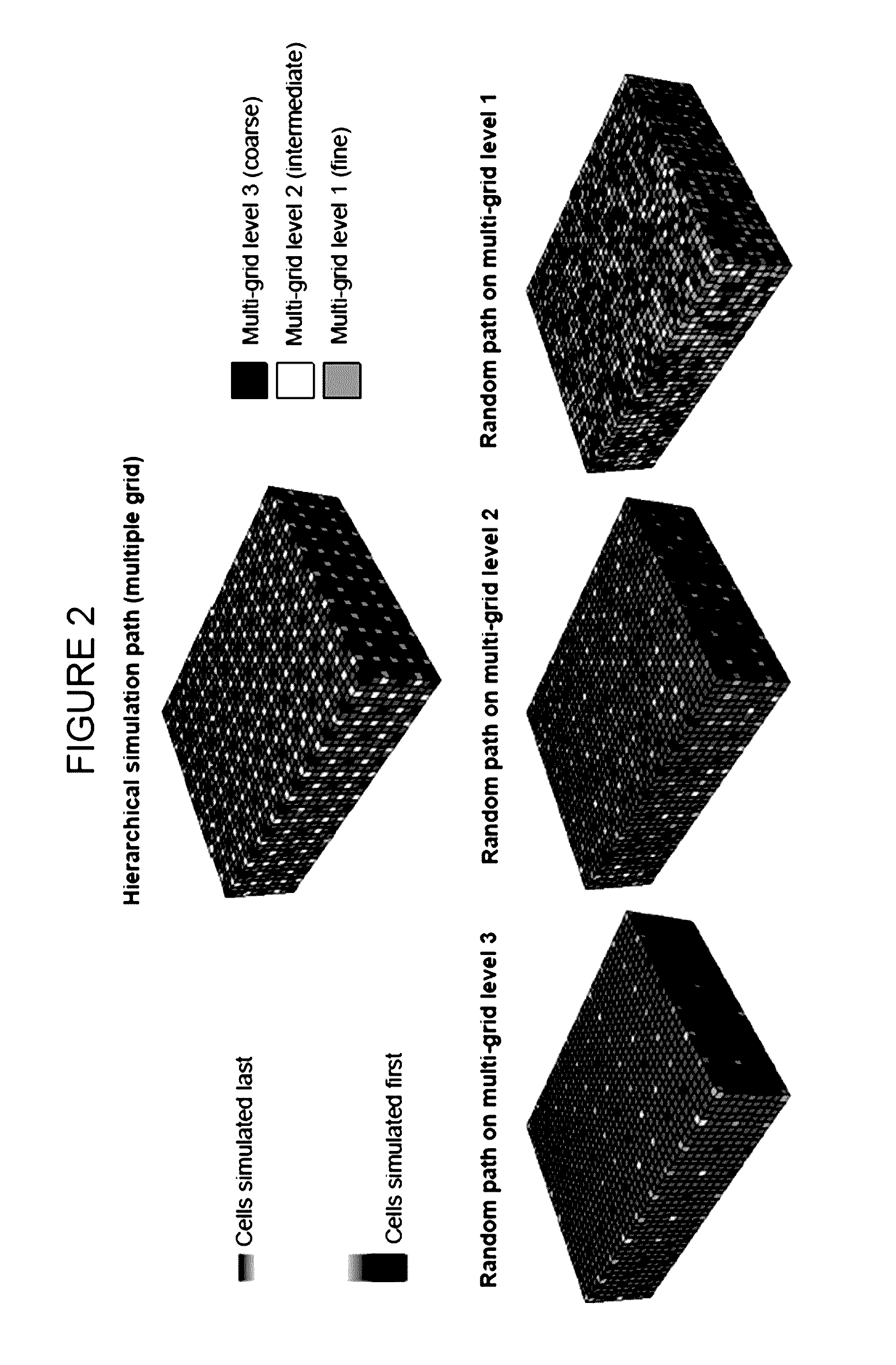Geobody continuity in geological models based on multiple point statistics
- Summary
- Abstract
- Description
- Claims
- Application Information
AI Technical Summary
Benefits of technology
Problems solved by technology
Method used
Image
Examples
Embodiment Construction
[0065]The MPS facies modeling method proposed by Strebelle is increasingly gaining attention in the petroleum geological modeling community. MPS models reproduce the geological patterns and also are flexible in data conditioning since they are based on a pixel-based algorithm. One issue of the current MPS algorithm, however, is that the long range or larger scale sinuous geobody (e.g. fluvial channel) continuity cannot be accurately reproduced. Discontinued channels are generated in MPS models even though they do not exist in the training image. The resulting blind end channels will negatively impact predictions of reservoir connectivity and reservoir flow performance.
[0066]To reproduce the large scale pattern continuity, Daly and Hu proposed to use a unilateral path on all grid cells. This method improved channel continuity, but reduced uncertainty ranges resulting from deterministic path and also it could not accurately condition model realizations to hard data.
[0067]As another po...
PUM
 Login to View More
Login to View More Abstract
Description
Claims
Application Information
 Login to View More
Login to View More - R&D
- Intellectual Property
- Life Sciences
- Materials
- Tech Scout
- Unparalleled Data Quality
- Higher Quality Content
- 60% Fewer Hallucinations
Browse by: Latest US Patents, China's latest patents, Technical Efficacy Thesaurus, Application Domain, Technology Topic, Popular Technical Reports.
© 2025 PatSnap. All rights reserved.Legal|Privacy policy|Modern Slavery Act Transparency Statement|Sitemap|About US| Contact US: help@patsnap.com



